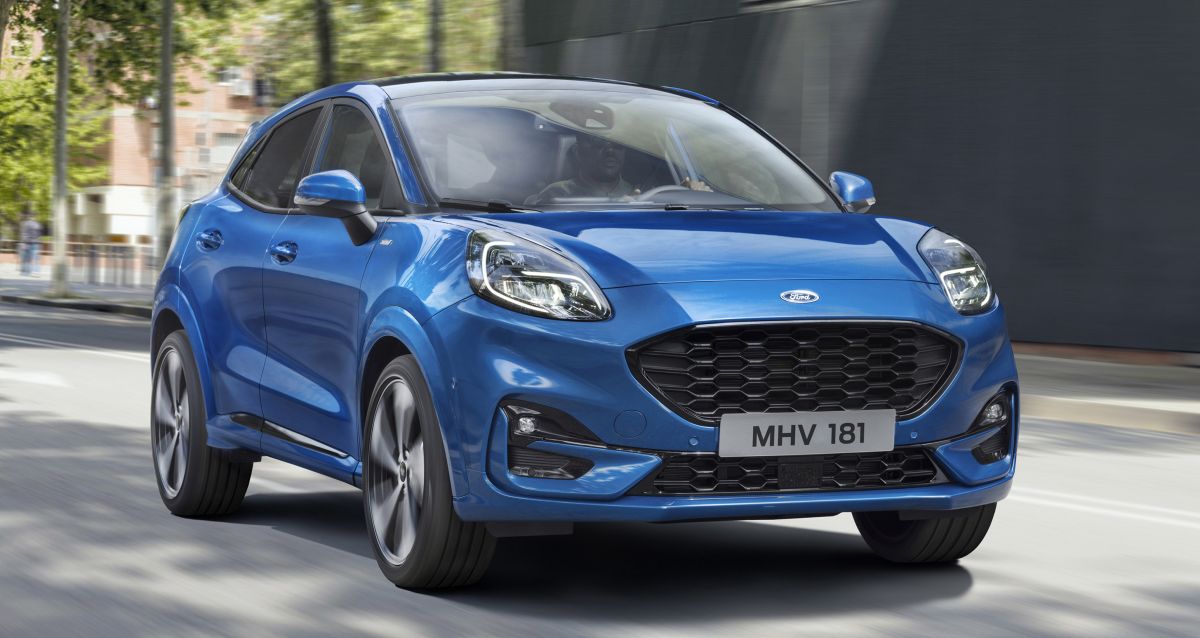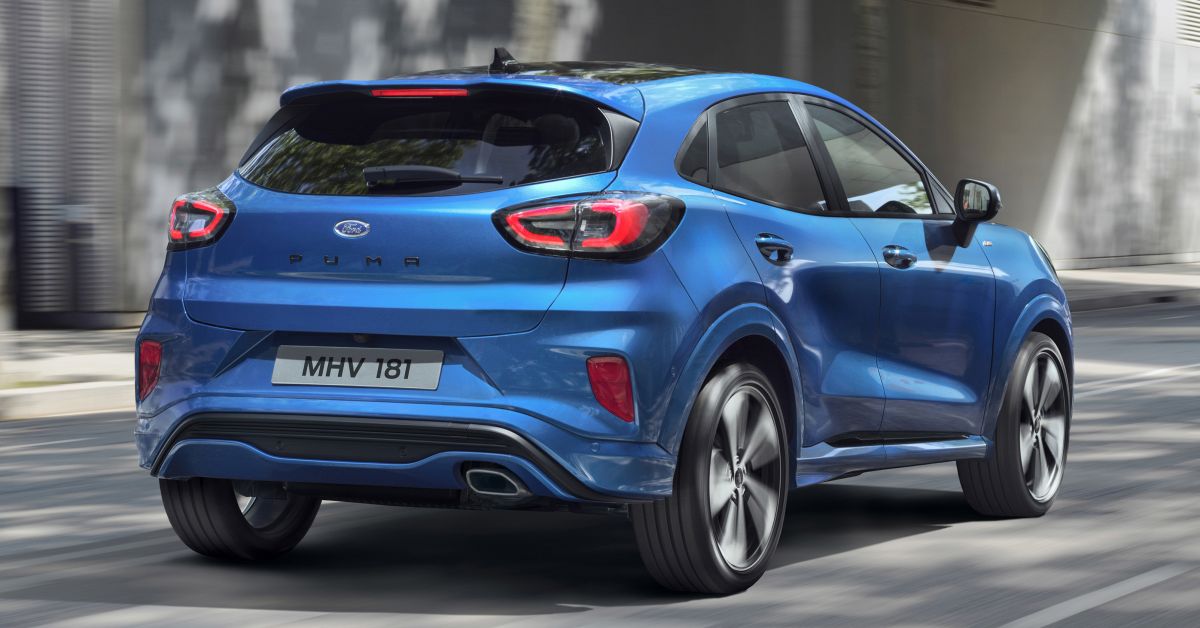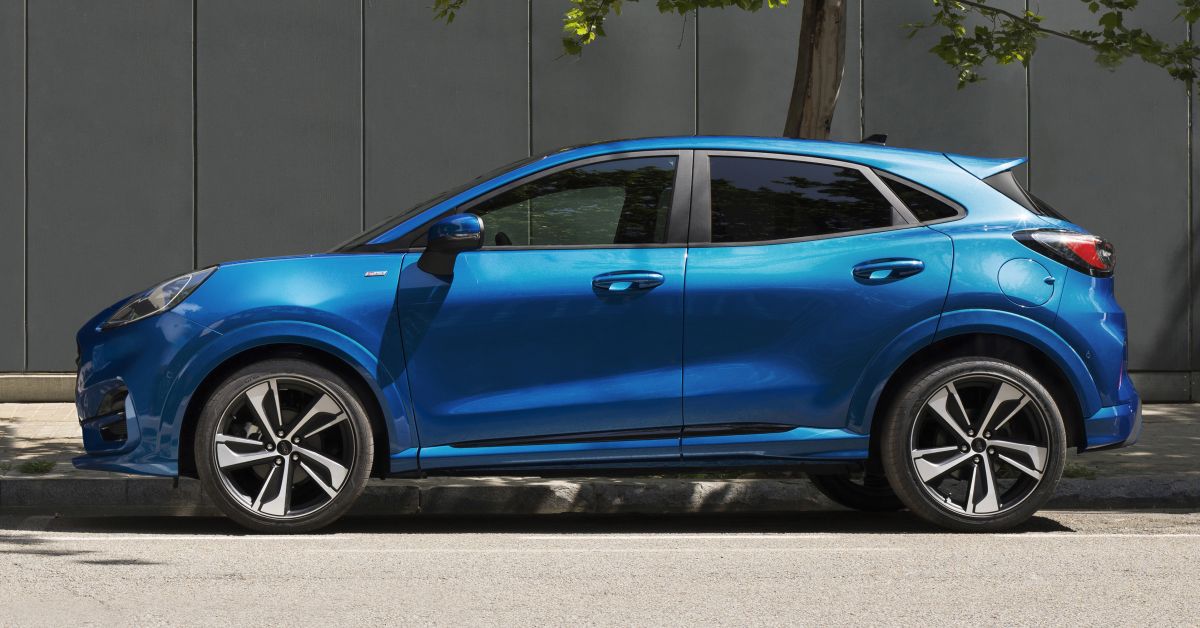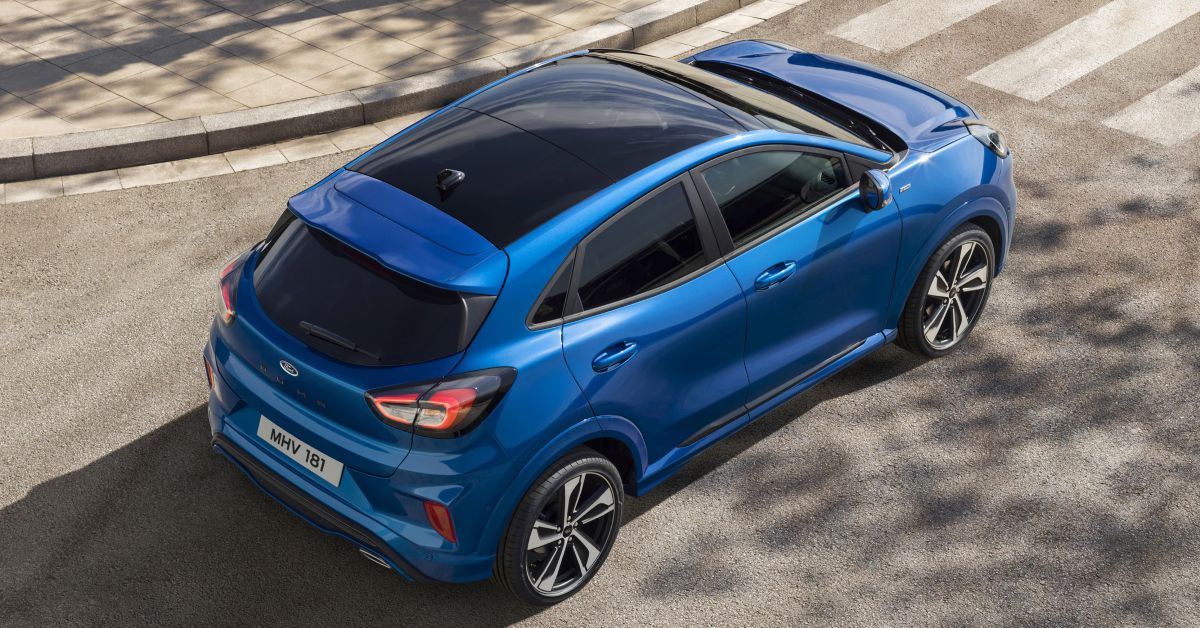The cat is finally out of the bag! Ford has taken the veils off the all-new Puma, this time taking shape as an SUV-inspired compact crossover instead of being affixed to a new-generation sports car (like the original Puma was). Such is the trend, we’re afraid, but the Blue Oval has a few bold claims to justify the move.
First off, let’s talk design. The jacked up car rides on Ford’s B-car architecture, resulting in a compact yet decidedly athletic profile. Up front, the Puma gets a pair of canoe-shaped headlights with LED DRLs, LED fog lamps positioned next to the air curtains, as well as a gaping radiator grille with mesh design. This look will divide opinions, but Ford says the approach was to give the Puma a more approachable face.
Things get more attractive round the side. The subtle shoulder line graduates to the prominent haunches, giving the Puma a strong, pert rump. Black plastics are used for the window surrounds, and the same material has been cleverly used to underscore the bottom of the A-pillars, so as to give it a floating look.
If you ask us, the rear end is perhaps the Puma’s best viewing angle. Apart from the small windscreen and heavy use of sheet metal, the combination of clear-lensed LED tail lights, sporty ST-Line rear bumper and painted lower diffuser makes up for the visual heft. As standard, the Puma rides on 18-inch wheels, but ST-Line models get the optional 19-inch matte black rims to go with the sports suspension with specially tuned springs and shocks.
Inside, the cabin design is nearly identical to the Ford Fiesta, with features such as the 12.3-inch “true colour” digital instrument cluster and a freestanding eight-inch SYNC 3 head unit with Apple CarPlay and Android Auto functionalities. FordPass Connect with WiFi hotspot supports connectivity of up to 10 mobile devices, and the FordPass mobile app allows controls such as Door Lock Unlock and Remote Start.
Options include a full-length panoramic glass roof, and a 10-speaker Bang & Olufsen Sound System. The latter comes with subwoofer (150 mm x 200 mm) that’s integrated into the boot without compromising boot space, and the speakers are driven by a 575-watt digital signal processing amplifier that also controls equalisation and audio mixing.
Speaking of boot space, the Puma comes with a flexible storage compartment, offering three configurable cargo options. At its deepest setting, the Ford MegaBox is able to fit two golf cart bags (medium sized golf bags) vertically, with enough space on the sides for smaller items such as a suitcase. The maximum boot space with the rear bench still upright is 456 litres. There’s also a motion sensing tailgate lift system that works via a simple kicking motion under the rear bumper.
Now, at the heart of the Puma is a 1.0 litre three-cylinder EcoBoost petrol engine, equipped with the company’s new mild-hybrid architecture. The electrical system comprises an 11.5 kW belt-driven integrated starter/generator (BISG), which replaces the standard alternator. This recoups energy that is traditionally wasted during braking or coasting and reroutes them into the 48-volt lithium-ion battery pack (air-cooled).
The BISG also acts as a motor to provide up to 50 Nm of twist, and is most helpful at lower engine loads. Its fitment also led Ford engineers to reduce the engine’s compression ratio, and to meet the desired output, they installed a larger turbocharger with sustained boost pressure.
Offered in 125 PS and 155 PS variants, the mild-hybrid setup improves fuel efficiency by up to nine percent. Based on WLTP testing, the Puma’s average fuel efficiency is rated at 5.4 litres per 100 km for the 125 PS variant, and 5.6 litres per 100 km for the 155 PS model.
Engine start-stop is standard, and the time taken to restart then engine is 300 milliseconds, or about the same as the blink of an eye. Cylinder deactivation is also present, although this is only limited to the 1.0 litre EcoBoost Hybrid and 1.0 litre EcoBoost. Customers also get to choose from a range of petrol- and diesel-only engines, paired to either a six-speed manual or seven-speed dual-clutch transmission.
Lastly, safety. It’s pretty impressive for what it’s worth – there’s Ford Co-Pilot360, which features a suite of system that work via a set of 12 ultrasonic sensors, three radars, and two cameras that have been positioned around the car. This oversees Adaptive Cruise Control with Stop & Go, Speed Sign Recognition, and Lane Centring functions.
For the first time on a B-segment Ford vehicle, the rear camera boasts a wide angle view of up to 180 degrees, making objects or pedestrians more visible when reversing in tight situations. Other features include Blind Spot Monitoring System with Cross Traffic Alert, Active Park Assist with Perpendicular Parking, Road Edge Detection, Pre-Collision Assist with Pedestrian Detection, and Post-Collision Braking technology.
To help drivers avoid getting into accidents, there’s Evasive Steering Assist which has been designed to operate at city and highway speeds. This uses the radar to identify slow-moving or stationary cars and provides steering support to safely manoeuvre around them. The other is Wrong Way Alert, which prompts audible and visual warnings when driving through two “No Entry” signs.
The new Ford Puma will go on sale at the end of the year and will be produced at the automaker’s Craiova assembly plant in Romania. Ford Europe’s president, Stuart Rowley said: “We believe Puma is going to really resonate with drivers in Europe. We’ve gone to every length to give customers the flexibility they want, and the best-looking car they’ve owned.”
Source: Read Full Article







